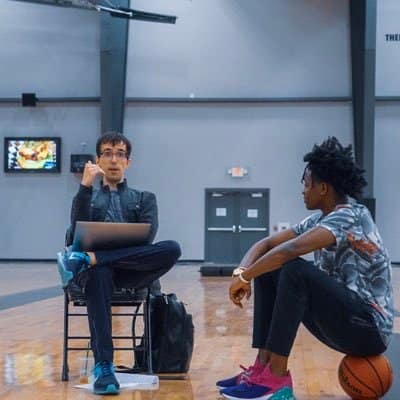It has only been a week since Jalen Green changed the industry by bypassing college for the new G League route. In this week’s Three-Point Play, Rivals analyst Corey Evans discusses why there has been some misinformation since then, why this year’s group must work and how the timing on the G League’s part worked in its favor in spite of the ongoing pandemic.
*****
MORE: Twitter Tuesday | Ten who would have shined during evaluations | Corey Evans' mailbag | Big man Samson Johnson trending up
2020 Rankings: Rivals150 | Team | Position
2021 Rankings: Rivals150 | Position
2022 Rankings: Top 75
*****
1. THIS IS JUST FOR THE ELITE
There is a giant misperception hovering throughout the industry. Yes, the G League is shooting for the best in the 2020 class, as in Jalen Green and Isaiah Todd, but this should be made clear: This new avenue is not attempting to circulate 30 to 40 of the best prospects this spring, but rather is geared toward the elite.
I found it funny at first, then downright troublesome, that reporters were trying to get a leg up by breaking a prospect’s decision to decline the G League invitation. Whether it was ego or that the prospect didn’t know how to respond, lies began to spout, leading many to believe that the G League was inviting more than just the select elite, but rather a multitude of graduating senior prospects.
It is a bit difficult to backcheck if the prospect is telling the truth, but in speaking with sources, the truth has not been a consistent thread since Green committed to the new program. Rod Strickland and Shareef Abdur-Rahim have made it clear to the prospect and family in mind that such an offer should be kept private, which is why Green and Todd taking the option didn’t become public until it was official.
The end of college basketball is not at hand. The G League is not attempting to overshadow the sport as we know it. Rather, only a few prospects will be invited this year and next, which means that while we may miss out on Green’s dunking shenanigans next winter, the college game will forge on with March providing the craziness that we have all become accustomed to every year.
*****
2. MUST MAKE IT WORK FOR YEAR ONE
While many believe the pressure is now on Green and Todd to succeed, the reality of the situation is that the G League is the one that must make it work. Just as the NBL had to see things through with LaMelo Ball and RJ Hampton last year, if there is any desire for this new select program to flourish beyond just next winter, then Green, Todd and whomever else joins them must flourish under its watch.
This new program is not going away, that is unless the one-and-done rule is abruptly erased. In the meantime, if this new pathway doesn’t want to fold within a year’s time, it is, in a sense, at the mercy of Green and Todd.
Granted, I don’t see there being a chance that Green fails. He is someone that could have sat out the winter and potentially seen his stock improve because of the what-if factor. Either way, there is good reason for why and how much they invested into Green, which I have been told is up to a $650,000 contract plus incentives, living arrangements, potential hiring of first-class trainers and past NBA veteran coaches as in Sam Mitchell, and much more.
Todd likely will receive half of what Green did, but the investment is there. Add up the contract, insurance fees, paying for the facility that will likely be the Mamba Sports Academy, travel, others that will fill out the roster, and the numbers skyrocket. Hence, this is not a run-of-the-mill operation, but one that the NBA and the G League are taking seriously so that it works and is just another reason why taking more than five or six participants would not be a good idea. The more it can focus on a select group, the better the chance that it actually succeeds.
Compared with the NBL where one could fake an injury, or in college, where staffs might be able to hide glaring flaws, there is nowhere to go in this new G League select program. It is also why if Green or Todd sees their draft stock falter, the chances of the future elite following in their footsteps becomes a moot point.
*****
3. TIMING WORKS IN THEIR FAVOR
The timing on the G League’s part could not have come at a better time. Granted, no one knows what is ahead in connection with the coronavirus but if it does linger into the winter, it may only enhance the G League’s pitch and workability compared to college.
We do not know what or how international travel will look later this summer. For as intriguing as the NBL might be, the pandemic may have shut the borders and forced those that may have wanted to play overseas to attend college. Instead, a simple flight to California would suffice, making it much easier for the prospect and his family to take part in this new initiative.
Another underlying layer is that of what the colleges may not be able to offer. Who says that there will be a college season? Even if so, who says that fans will be allowed to attend? This takes one great selling point from the universities' perspective and places the G League on equal footing in that regard.
Not only that, if the college season is canceled, sources have told Rivals.com that this new select path will be a go, either way. In a sense, the G League route may be the safest of the two. Even if the coronavirus lingers, the contract that entails such training, development and structure remains while the college game may be out of sight.
